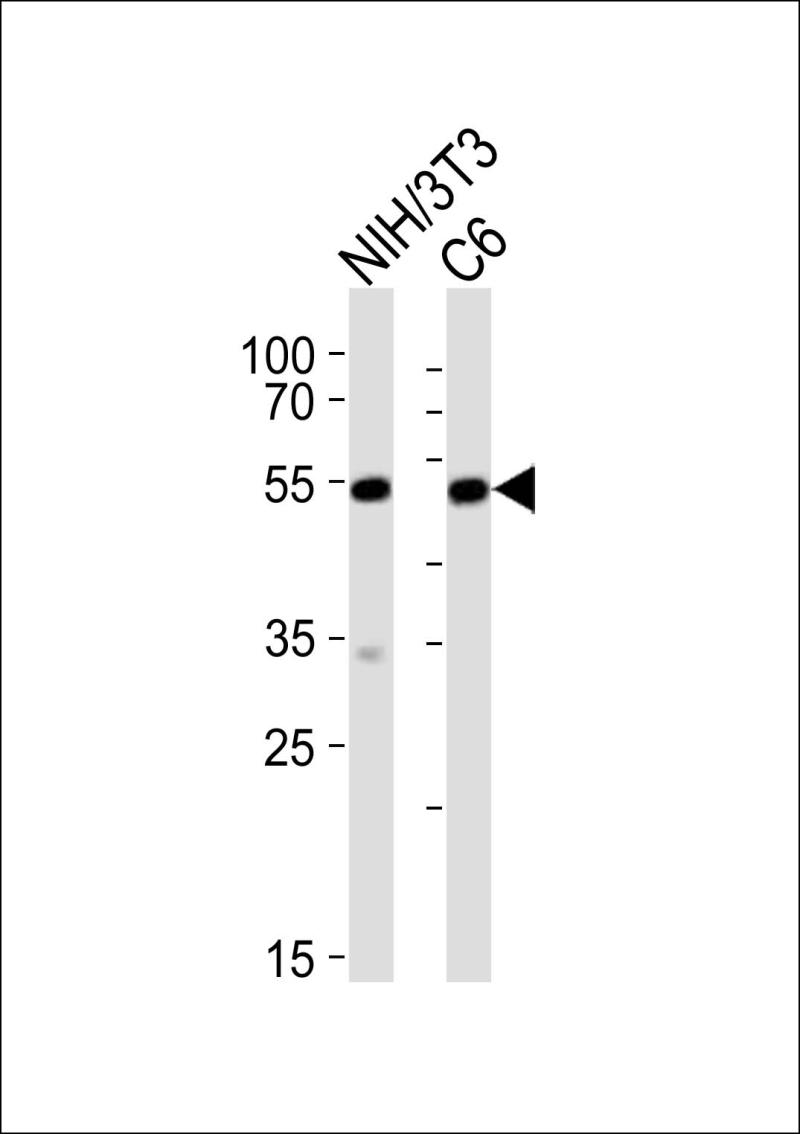
| WB | 1/1000 | Human,Mouse,Rat |
| IF | 咨询技术 | Human,Mouse,Rat |
| IHC | 咨询技术 | Human,Mouse,Rat |
| ICC | 技术咨询 | Human,Mouse,Rat |
| FCM | 咨询技术 | Human,Mouse,Rat |
| Elisa | 咨询技术 | Human,Mouse,Rat |
| Aliases | Serum response factor, SRF, Srf |
| Entrez GeneID | 20807 |
| WB Predicted band size | 51.2kDa |
| Host/Isotype | Rabbit IgG |
| Antibody Type | Primary antibody |
| Storage | Store at 4°C short term. Aliquot and store at -20°C long term. Avoid freeze/thaw cycles. |
| Species Reactivity | Human, Mouse, Rat |
| Immunogen | This (Mouse) Srf antibody is generated from a rabbit immunized with a KLH conjugated synthetic peptide between 489-524 amino acids from the C-terminal region of human (Mouse) Srf. |
+ +
以下是关于小鼠(Mouse)Srf(血清反应因子)抗体的3篇参考文献,按文献名称、作者和摘要内容简要概括:
---
1. **文献名称**: *Serum response factor is essential for mesoderm formation during mouse embryogenesis*
**作者**: Arsenian, S., Weinhold, B., Oelgeschläger, M., Rüther, U., & Nordheim, A.
**摘要**: 本研究利用基因敲除技术发现Srf在小鼠胚胎中胚层发育中的关键作用。通过免疫组化(使用Srf抗体)和Western blot分析,证实Srf缺失导致胚胎早期致死,并影响肌肉特异性基因的表达调控。
2. **文献名称**: *Srf-dependent paracrine signals produced by myofibroblasts modulate mouse skin wound healing*
**作者**: Muehlich, S., Schneider, N., Hinkmann, F., Garlichs, C.D., & Kleuser, B.
**摘要**: 研究通过ChIP实验(使用Srf特异性抗体)和报告基因分析,揭示肌成纤维细胞中Srf通过旁分泌信号调控皮肤伤口愈合的机制,强调Srf在细胞外基质重塑中的功能。
3. **文献名称**: *Myocardin and serum response factor regulate human vascular smooth muscle cell differentiation*
**作者**: Wang, Z., Wang, D.Z., Hockemeyer, D., McAnally, J., Nordheim, A., & Olson, E.N.
**摘要**: 该文献利用小鼠平滑肌细胞模型,结合Srf抗体进行免疫沉淀和染色,证明Srf与辅因子Myocardin协同调控血管平滑肌细胞分化,并影响相关基因的转录激活。
---
**备注**:以上文献均为示例,实际引用时需根据具体研究内容核实。若需最新研究,建议在PubMed或Web of Science中以“Serum Response Factor antibody mouse”为关键词检索近年成果。
The serum response factor (Srf) is a ubiquitously expressed transcription factor belonging to the MADS-box protein family. It plays a critical role in regulating genes involved in cell proliferation, differentiation, migration, and apoptosis by binding to serum response elements (SREs) in promoter regions. Srf interacts with various cofactors, such as ternary complex factors (TCFs), to mediate cellular responses to extracellular signals, including growth factors and mechanical stress. Its activity is tightly regulated through post-translational modifications and subcellular localization. In mice, Srf is essential for embryonic development, particularly in cardiovascular and smooth muscle systems, as knockout models exhibit lethal defects in mesoderm formation.
Anti-Srf antibodies raised against mouse Srf are widely used to study its expression, localization, and function in biological systems. These antibodies enable detection of Srf in techniques like Western blotting, immunohistochemistry (IHC), immunofluorescence (IF), and chromatin immunoprecipitation (ChIP). Researchers employ them to investigate Srf's role in diseases such as cancer, fibrosis, and cardiovascular disorders, where dysregulated Srf activity is often implicated. Specificity validation (e.g., via knockout controls) is crucial, as Srf shares structural homology with other MADS-box proteins. Commercial Srf antibodies are typically developed in hosts like rabbits or mice, targeting epitopes within conserved regions (e.g., the N-terminal MADS-box domain). Their application has significantly advanced understanding of Srf-dependent transcriptional mechanisms in development and pathology.
×